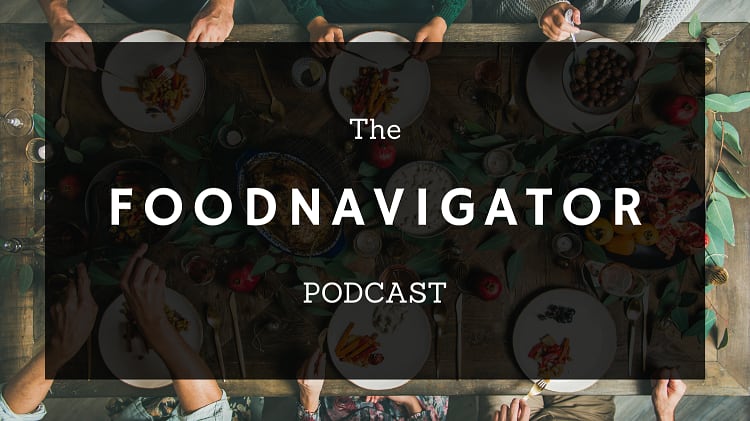Decrease in fertility, decline in mortality rate, and a higher life expectancy are all contributing factors to rising older population numbers in most European countries.
Amongst ageing populations, malnutrition is a real concern. Characterised by low body weight or weight loss, malnutrition suggests that someone isn’t eating well enough to maintain their health and wellbeing.
In the UK, it is estimated around one in 10 people over the age of 65 are malnourished or at risk of malnutrition.
What can be done to encourage better nutrition amongst older populations? Experts from the European Public Health Association (EUPHA) and Age UK weigh in.
What is malnutrition?
“Nutrition of older people is of major importance for global health because of a general increase of older individuals and the fact that there is a high percentage of them at risk of malnutrition,” explained Giuseppe Grosso, President of EUPHA Food and Nutrition Section and Professor in Human Nutrition at the University of Catania in Italy.
While there are many reasons why someone might become malnourished, it is preventable. Long-term conditions that might affect one’s appetite include loss and bereavement, becoming a carer, feeling lonely or isolated, or worrying about finances.
“As we get older, our health needs change and can increase the risk of malnutrition,” according to national charity Age UK.
Key signs of malnutrition include low body weight, unintentional weight loss, feeling lethargic or more tired, smaller appetite, having difficulties with chewing or swallowing, or loose dentures.
Challenges in health messaging
One of the challenges facing older populations is the very concept of nutrition. There is much confusion around what ‘good nutrition’ actually means for older people in the UK, according to Lesley Carter, Clinical Lead for Professionals and Practice at Age UK at Programme Lead for the Malnutrition Task Force.
“In the UK, we get quite confused. We are worried about the obesity agenda here, so [a lot of messaging] is about making sure you have your five-a-day and less fat. But of course, that is not the best message as we age. As we age, we need to change the way we are eating.”
Indeed, communications around ‘healthy’ diets that target younger is not always suitable for older demographics. Carter is quick to dismiss the common ‘eat three meals a day and no snacking’ mentality when advising older people. “We say: ‘Have six meals a day. Have three small meals, three snacks, or six small snacks…whatever you need.”
Another concern surrounding current health messaging presents itself as an ‘intergenerational issue’. “Some grown-up children, who do the shopping or keep an eye on their older relatives, [tend to buy low fat products] because they are in the habit of preparing food for their children.
“They cannot [conceive] that they should be buying whole milk or whole yoghurt.”
This can cause problems when, as appetites decrease, older people consume less food. What food they do consume should therefore be more nutrient-dense, and where possible, fortified.
And when appetites have decreased, Carter is more likely to advise older people to consume whatever they feel like – giving less weight to micronutrient profile. “We tell people they should eat what they can what they fancy. There is no point in eating a big bowl of salad if that’s all they’re going to eat all day.
“In certain circumstances, it might be better for them to have a milky coffee and a bun, because that will start to train them to eat more.”
Combatting convenience guilt
A convenient way for older populations to achieve better nutrition is through well-balanced, healthy, micronutrient-rich ready meals.
Age UK’s Carter is impressed by how far ready meals targeting older populations have come in recent years. “There are some ready meals and home delivery services that I know a lot of people use, which work really hard at getting their food balanced and at offering choice.
“Some of them offer low fat, low salt, or soft (for dysphasic consumers) options. Over the past two to four years, the standard of ready meals has improved.”
The malnutrition expert is particularly impressed by tailored meal service Apetito, which has developed ‘very small’ meals that contain 500 calories each. “That is really good,” she told FoodNavigator, again referencing reduced appetites in older populations.
While the ready meal sector for this demographic is ‘moving in the right direction’, older consumers themselves need to overcome the guilt of purchasing products of convenience, suggested Carter.
“People feel guilty about getting ready meals. Older people feel they must cook from scratch, they’re worried about public health messages and what they’re hearing from dieticians.”
Carter continued: “We try to say to people: ‘If you’ve been poorly, or you’ve been bereaved, or you’re sad, or any of those things, you might not be bothered to get up and cook something. So that’s the time to open the freezer, whip out one of these ready meals. And that’s perfectly ok’.”
Ensuring affordability and accessibility
At the same time, food for older populations – whether designed for convenience or otherwise – must be accessible. This is of major concern for EUPHA.
Malnutrition, explained EUPHA’s Grosso, is linked to other key challenges in the food system. “Although this might seem counterintuitive, the nutrition of older people is just a niche of the overall importance of healthy nutrition for people globally,” he explained.
“This is because something of greater impact, and at the same time connected to older adults’ malnutrition, is food security, food availability, and affordability.”
While improvement in food processing on the part of food manufacturers might be a factor, it is ‘not the solution’ at large-scale. “Having more palatable or appealing food products is not really the main point if then they are not available or affordable by the majority of older populations,” Grosso told this publication.
“A large impact intervention should be at policy level, for instance decreasing the price of specific products, which should be first nutritious and of course more suitable for older adults.”




